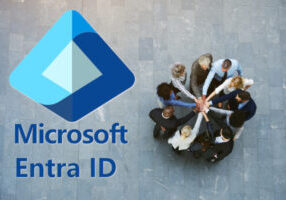
Overview
According to one source, these are the most dangerous activities to engage in:
- Free solo climbing
- Base jumping
- Wing-suiting
- Bull running
- Hang gliding
Honestly, we wonder why bull running wasn’t first on the list!
Managing risk is part of life. We all take risks every day, most likely not any of those listed above. But what most people are particularly bad at is defining and calculating risk properly. Sometimes people focus on “risks” which are practically non-existent while ignoring true risks. For example, this happens every time a person drives to the airport comfortably in a car while texting and listening to the radio and then is very nervous on the flight! In reality, the risk of death or debilitating injury was far higher in the vehicle on the way to the airport than it was on the airplane, but the focus on risk was misallocated.
In a business context, risk refers to the possibility of an event or action occurring that could have an impact on the organization. Or as Wikipedia states, “risk is the possibility of something bad happening.” Risk management, risk mitigation and risk reduction are terms for disciplines designed to lessen the negative consequences and impact of business risk. This impact can be a mix of financial, operational, or reputational. Risk can come from a variety of sources, including financial markets, technological changes, regulatory changes, personnel changes, natural disasters, and even simple human error.
Strategies: Managing Risk
Risk management is the process of identifying, assessing, and prioritizing risks, and developing strategies to mitigate or eliminate those risks. This involves a mix of one or more of the following strategies:
- Implementing controls to avoid potential risks.
- Implementing plans that reduce the impact of a risk when it hits.
- Purchasing insurance or hiring a responsible and accountable third party to address the risk, thereby conducting a transfer of the risk.
- Or resolving to accept the risk.
It should be noted that any remaining risk which is not avoided, reduced or transferred away is automatically accepted by default. Failure to address a risk does not cause it to go away!
Effective risk management is critical for businesses of all sizes, as it helps to protect the organization’s assets and ensure its long-term viability. By identifying and addressing risks early on, businesses can avoid or minimize the potential negative impacts of those risks and increase their chances of success.
Defining Risk in Mathematical and Financial Terms
Mathematically, risk is often defined as the product of the likelihood of an event occurring and the impact of that event. This is often expressed as:
Risk = likelihood of event * impact of event
For example, if the likelihood of a natural disaster occurring is 0.2 (or 20%), and the impact of that disaster on the organization would be $100,000, the risk would be calculated as:
Risk = 0.2 * $100,000 = $20,000
This calculation can be used to help organizations prioritize risks and determine which risks require the most attention. By identifying the risks with the highest likelihood and impact, organizations can focus their risk management efforts on the areas that will have the greatest impact on the organization.
The calculation can also inform the limits of resources dedicated to dealing with a particular risk. If the annual impact of a risk is $12,000 it should be noted that hiring a salaried $80,000 employee solely to address that risk is nonsensical. It would be more efficient to cover that $12,000 risk directly with a checkbook.

Potential Risks Every Business Faces
Businesses can face a wide variety of risks, but some of the most common include:
- Financial risks: These risks are related to the financial health of the organization and can include things like market risks, credit risks, and liquidity risks.
- Operational risks: These risks are related to the day-to-day operations of the organization and can include things like supply chain disruptions, equipment failures, and data breaches.
- Reputational risks: These risks are related to the reputation of the organization and can include things like negative media attention, customer dissatisfaction, and loss of trust.
- Legal and regulatory risks: These risks are related to the compliance of the organization with laws and regulations, and can include things like fines, lawsuits, and penalties.
- Environmental risks: These risks are related to the impact of the organization’s operations on the environment, and can include things like pollution, resource depletion, and climate change.
- Human resources risks: These risks are related to the management of the organization’s workforce, and can include things like employee turnover, skill shortages, and workplace accidents.
- Political risks: These risks are related to the stability and predictability of the political environment in which the organization operates, and can include things like changes in government policies, political instability, and terrorism.
Risk Management is often viewed as a cost burden on a company, but by identifying and managing risks such as those listed above, businesses can reduce the likelihood of negative events occurring and minimize the impact of those events when they do occur. This leads directly to several benefits of risk management in business:
The Benefits of Managing Risk Well
- Improved decision making: By identifying and assessing potential risks, businesses can make more informed decisions that take into account the potential impact of those risks. This can help businesses to make better decisions about how to allocate resources and make investments and can also help to avoid costly mistakes.
- Increased efficiency: By identifying and addressing risks early on, businesses can avoid or minimize disruptions to their operations. This can help to increase efficiency and productivity and can also reduce the need for costly repairs or remediation efforts.
- Enhanced reputation: Effective risk management can help businesses to maintain a positive reputation with stakeholders, including customers, employees, and investors. By demonstrating a commitment to managing risks and addressing potential issues, businesses can build trust and confidence in their operations.
In summary, risk management is an important aspect of business management that can help organizations to make better decisions, increase efficiency, and maintain a positive reputation, all of which lead to a safer, more stable and prosperous business for both you and the employees that count on your business.
SUURV Technologies can help your business mitigate risks. Simply call (210) 874-5900 or fill out our contact form by clicking here.
Get Help Now!
We bring a laser focus to the three most critical functions of your company.
1. Business Operations

SUURV would love to talk with you about our vCIO and TAM support. It's the solution you've been searching for.
2. IT Infrastructure

THERE'S NEVER a one-size-fits-all approach. We implement custom solutions that scale with your growth.
3. Employee Support

You spent a lot of time building your team. We work around the clock to support them.

















